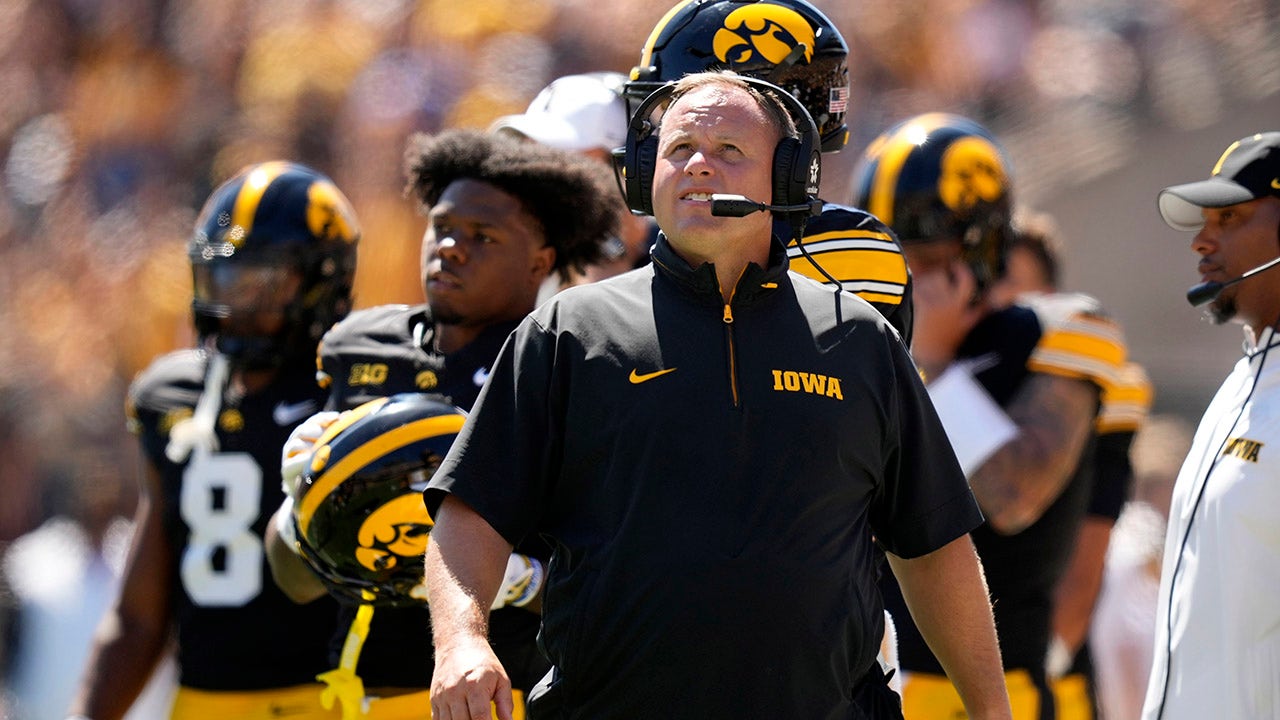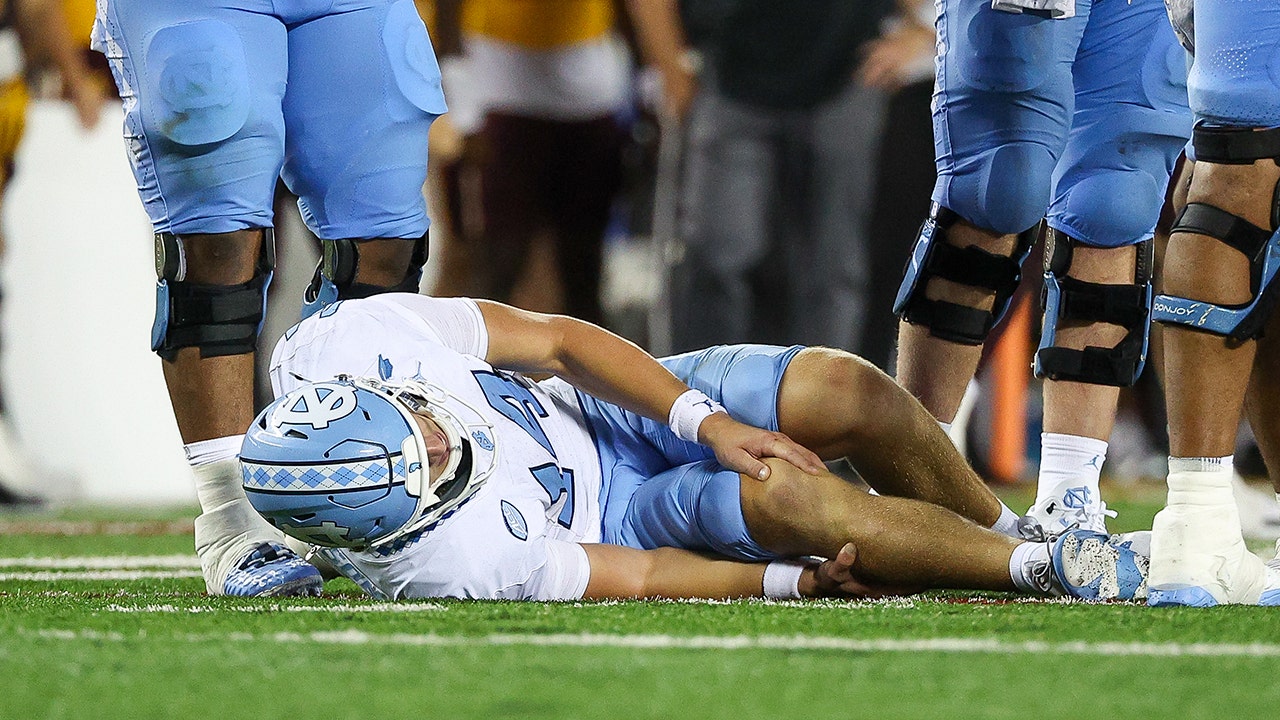The orphans, three baby females, arrived one after the other at ZooTampa’s manatee hospital.
The first had been found swimming alone in shallow waters, her umbilical cord still attached. Two months later, another was rescued from a canal. Then came the smallest they’d ever gotten: Manatees typically should weigh about 65 pounds at birth, but this one was only 44 pounds.
They were named Calliope, Soleil and Piccolina.
It was 2021, a bad year for Florida manatees. On the state’s east coast, decades of sewage and fertilizer pollution had led to a mass die-off of seagrass, which the animals rely on for food. Wildlife officials tallied hundreds of emaciated corpses. Elsewhere, other threats continued, like collisions with boats and poisoning from red tide, a toxic algae.
No one knows what happened to the mothers of the three babies, who were rescued on Florida’s west coast. Normally, a calf stays with its mother for up to two years, swimming right behind one of her flippers as it learns where to find both food and the warm-water areas it will need to survive cold spells.
“Obviously some sort of trauma happened,” Molly Lippincott, who manages Florida species at ZooTampa, said.
And so Calliope, Soleil and Piccolina joined the scores of manatees each year who get personalized interventions akin to ambulance rides, intensive care units and long-term rehab. Some even fly on airplanes before they’re released back in the wild.
Manatees were among the first animals listed on the Endangered Species Act in 1973, when their population was estimated at around 1,000. Now they’ve come to exemplify both the power of conservation and how tenuous its successes can feel. The most recent population estimate, for 2021-22, is about 10,000. Researchers largely attribute the increase to habitat protection and speed restrictions for boats. In 2017, the federal government downlisted Florida manatees from endangered to threatened.
But new threats loom.
Climate change and Florida’s growing population are expected to create the conditions for an increase in harmful algal blooms, according to a report commissioned by the state. Red tide can kill manatees directly, while other kinds of algal blooms can choke off the seagrass they need to survive.
Ultimately, the health of the species will depend on treating the root causes of these and other threats. That means doing things like decreasing pollution from leaky septic systems and fertilizer runoff. Last year saw some encouraging recovery of seagrass in the Indian River Lagoon, the epicenter of the 2021 die-off. Wildlife officials have stopped a supplemental feeding program in the area for now.
From Florida to Ohio: A temporary home
During their year-plus at ZooTampa, the three babies gained weight well. By November 2022, little Piccolina was already 375 pounds, Calliope was over 400 and Soleil came in at 475.
But manatees aren’t released into the wild until they hit at least 600 pounds, a size thought to give them some padding, as it were, as they learn to fend for themselves. They put on about a pound a day, so gaining that much weight takes time. To free up critical-care pool space, manatees are sent to yet another temporary home.
For Calliope, Soleil and Piccolina, that meant traveling a thousand miles, to the Cincinnati Zoo.
The zoo, one of three facilities outside Florida that can take in manatees that need to get bigger, is part of a consortium of more than 20 agencies and organizations that collaborate on manatee rescue and rehabilitation.
In Ohio, Calliope, Soleil and Piccolina dined on romaine, endive, kale, escarole, green leaf lettuce, napa cabbage and bok choy. They often gobbled the greens from containers on the bottom of the tank arranged to imitate seagrasses.
Calliope was curious, smart and a bit of a troublemaker.
“She wants to be in all the business that’s going on in the tank,” one of her Cincinnati keepers, Remy Romaine, said.
“Has to be in the know,” added another, Tara Lay. “Very involved. No personal space.”
Soleil, in turn, seemed sweet and easygoing, more than happy to oblige her keepers’ requests, especially if there was food involved. “Our big chunk-a-munk,” Ms. Lay called her.
Piccolina, nicknamed Pickles, seemed a little shy and stayed close to her adopted sisters. While manatees are considered only semi-social, the three appeared to take comfort in each other.
Back to Florida: Packed up as precious cargo
Eleven months flew by.
In the fall of 2023, it was time for them to return to Florida. Only now, they were about twice as heavy.
To move a manatee, you have to start by getting it out of the water. In Cincinnati, that meant draining a medical pool.
Zoo workers used thick straps to physically shift each manatee onto a tarp-like stretcher with poles that, when suspended, creates a hammock of sorts. A winch lifts the manatee into a custom-built container that’s bedded with eight inches of foam.
The animals weren’t sedated, because that could conceal a medical emergency or compromise their ability to breathe.
It’s unclear how stressed manatees get by being lifted through the air in a hammock or placed in a strange, waterless container. But they seem to tolerate such moves well, experts say, and look surprisingly calm throughout the ordeal. (I very much wish I could have interviewed them.)
Manatees’ placid demeanor may be one of the qualities that have made them so popular with humans, said James Powell, a manatee expert and executive director of the Clearwater Marine Aquarium Research Institute, which is part of the network that rescues and rehabilitates manatees.
“There’s something about them that, I think, instills a sense of peacefulness in people,” Dr. Powell said. “They’re almost Buddha-like.”
This human-manatee connection means that the animals get more attention and funding than many threatened species. Money from the sale of manatee license plates and decals, boat registration fees and donations is funneled into a state trust fund for the species. From July 2021 to June 2022, it took in more than $4 million.
Zoos pick up much of the tab for manatee care and rehabilitation while they’re in human care. The manatee program at ZooTampa costs about $1 million a year, covered by a combination of ticket sales and state funding.
Off to the airport
DHL, the global shipping company, is not in the business of moving animals. But it makes some exceptions to help with conservation efforts, and has become a go-to courier for flying manatees.
Location is a big reason. The company’s national hub is just about 30 minutes from the Cincinnati Zoo, and a couple of hours from the Columbus Zoo, which also rehabilitates manatees.
“You’re part of something different, right?” said Joe Collopy, a senior director at DHL who oversees the animal moves. “The goal is every one of them getting back to where they were. And that makes it special.”
This flight carried the most manatees that DHL had ever flown at one time: not only Calliope, Soleil and Piccolina, but five others from the Columbus Zoo.
Manatee flights include a veterinarian and another manatee caretaker who check on the animals regularly, watching their nostrils to ensure that they’re breathing and occasionally misting them.
Most manatees rest on their bellies in transport, but Calliope prefers lying on her back, and that’s how she flew all the way back to Tampa.
“It is the animals’ temperament that helps a lot,” said Dr. Jenny Nollman, a vet at the Cincinnati Zoo who was on the flight. “They just stay chill and don’t freak out.”
But they do something else.
“There is a smell,” Dr. Nollman said. “They’re defecating.”
Manatee ticket prices vary depending on weight and how much other cargo is on the flight. For this trip, the Cincinnati Zoo paid about $21,000 for their three.
And finally, back to nature
In the past decade, more than 800 orphaned, sick or injured manatees have been taken to critical care centers. And capacity is expanding: ZooTampa is building two additional medical pools, and SeaWorld Orlando added three last year.
Such efforts use a lot of resources on a small number of manatees, but they also help educate the public about threats to the species, said Roger L. Reep, a professor emeritus at the University of Florida College of Veterinary Medicine who studies manatees and co-wrote a book about them.
“Most people are not interested in reading about, ‘Oh, we built a new water treatment facility and did away with, you know, 2,000 septic tanks,’” Dr. Reep said. “They don’t understand that that would have more enduring benefits for a larger number of manatees.”
Ms. Lippincott of ZooTampa said she took comfort in knowing she was one part of a bigger collective trying to help manatees, with many partners focusing on root causes. And given that the animals can live into their 60s, a year or two of rehabilitation is more than worth it, she said.
It was a fitting place for the release: Three Sisters Springs.
Calliope went first. A team carried her into the water on one of the tarp-like stretchers. She slid in on her back before slowly swimming away.
“Bye Calliope!” called Ms. Lay, who had traveled from Cincinnati to witness the release. “I love you! Please be good.”
The tracking device floated behind Calliope, making her seem like the nerdy new kid as she joined the dozens of wild manatees lolling in the warm natural spring.
She swam around the entire perimeter, curious as always.
An hour later, it was Soleil’s turn. The next day, Piccolina’s.
They found one another and gathered for a moment, away from the other manatees. Then they floated apart.















































